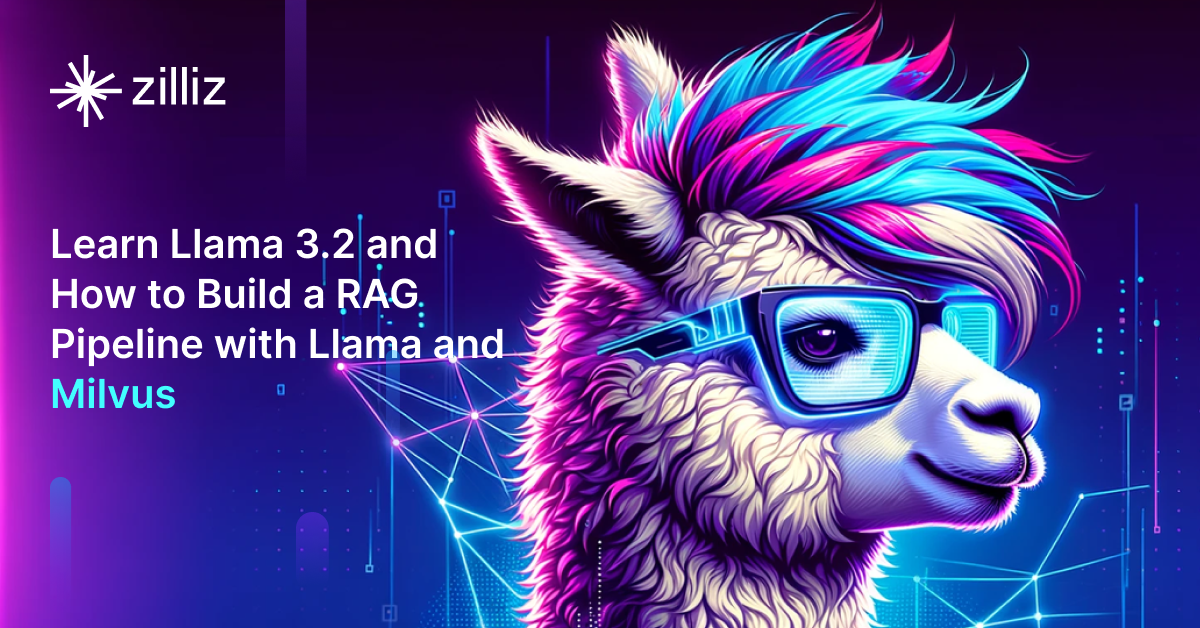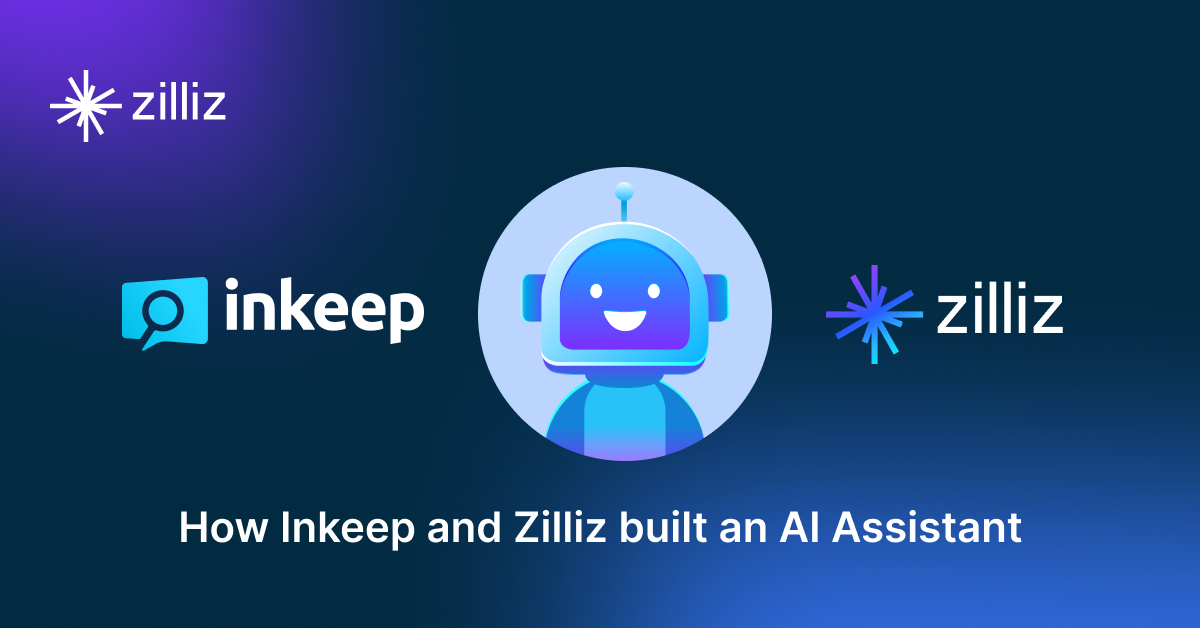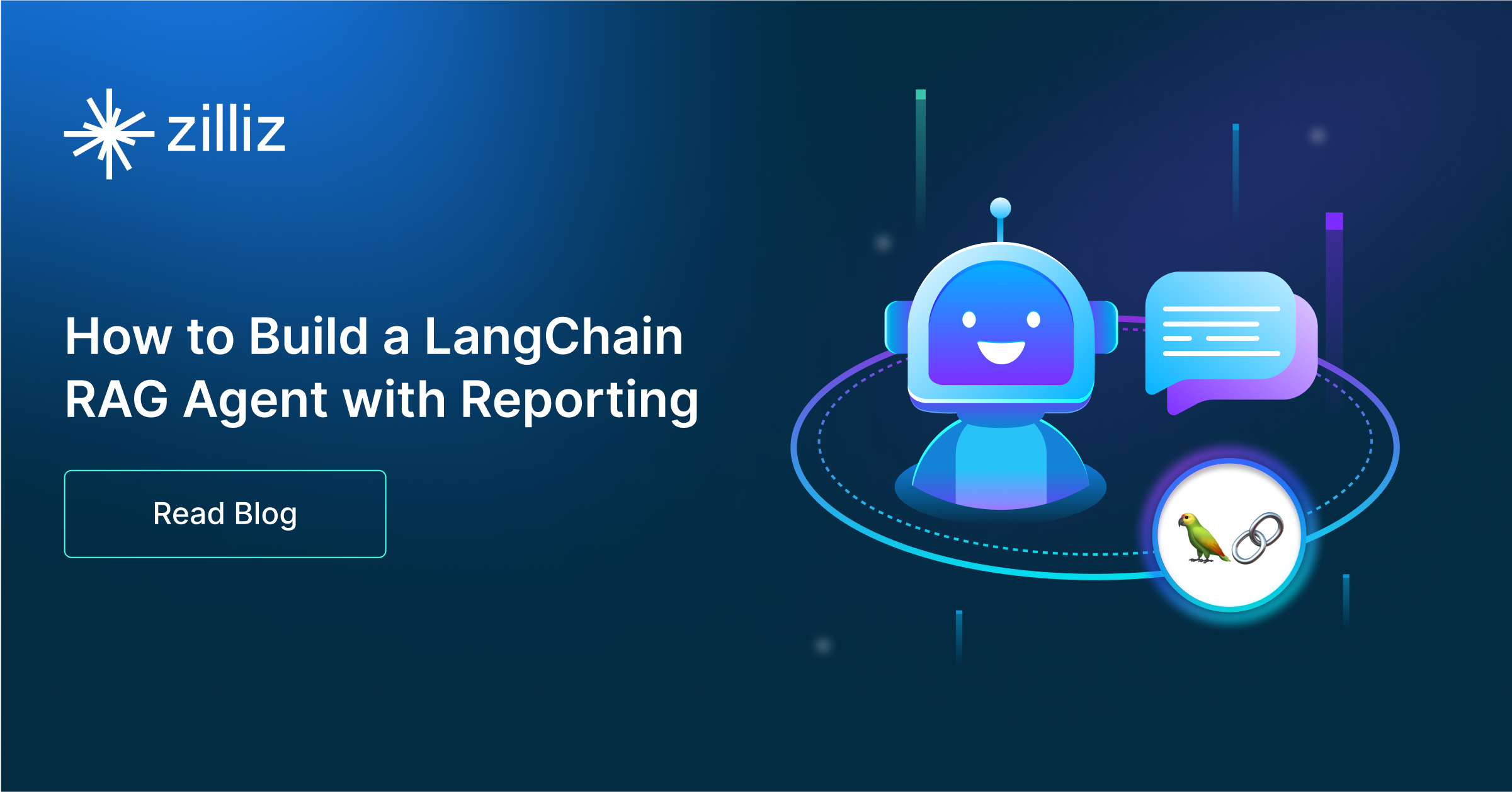Build RAG Chatbot with Haystack, Pgvector, Mistral Ministral 3B, and AmazonBedrock titan-embed-text-v1
Introduction to RAG
Retrieval-Augmented Generation (RAG) is a game-changer for GenAI applications, especially in conversational AI. It combines the power of pre-trained large language models (LLMs) like OpenAI’s GPT with external knowledge sources stored in vector databases such as Milvus and Zilliz Cloud, allowing for more accurate, contextually relevant, and up-to-date response generation. A RAG pipeline usually consists of four basic components: a vector database, an embedding model, an LLM, and a framework.
Key Components We'll Use for This RAG Chatbot
This tutorial shows you how to build a simple RAG chatbot in Python using the following components:
- Haystack: An open-source Python framework designed for building production-ready NLP applications, particularly question answering and semantic search systems. Haystack excels at retrieving information from large document collections through its modular architecture that combines retrieval and reader components. Ideal for developers creating search applications, chatbots, and knowledge management systems that require efficient document processing and accurate information extraction from unstructured text.
- Pgvector: an open-source extension for PostgreSQL that enables efficient storage and querying of high-dimensional vector data, essential for machine learning and AI applications. Designed to handle embeddings, it supports fast approximate nearest neighbor (ANN) searches using algorithms like HNSW and IVFFlat. Since it is just a vector search add-on to traditional search rather than a purpose-built vector database, it lacks scalability and availability and many other advanced features required by enterprise-level applications. Therefore, if you prefer a much more scalable solution or hate to manage your own infrastructure, we recommend using Zilliz Cloud, which is a fully managed vector database service built on the open-source Milvus and offers a free tier supporting up to 1 million vectors.)
- Mistral Ministral 3B: A compact, high-efficiency language model optimized for fast inference and low-resource environments. With 3 billion parameters, it balances performance and scalability, excelling in text generation, summarization, and question-answering tasks. Ideal for edge computing, real-time applications, and cost-sensitive deployments requiring reliable NLP capabilities without heavy computational demands.
- AmazonBedrock Titan-Embed-Text-v1: A high-performance embedding model designed to convert text into dense vector representations, enabling semantic search, clustering, and retrieval tasks. Strengths include scalability, multilingual support, and robust accuracy. Ideal for enterprise applications like recommendation systems, document similarity analysis, and AI-driven search engines within AWS environments.
By the end of this tutorial, you’ll have a functional chatbot capable of answering questions based on a custom knowledge base.
Note: Since we may use proprietary models in our tutorials, make sure you have the required API key beforehand.
Step 1: Install and Set Up Haystack
import os
import requests
from haystack import Pipeline
from haystack.components.converters import MarkdownToDocument
from haystack.components.preprocessors import DocumentSplitter
from haystack.components.writers import DocumentWriter
Step 2: Install and Set Up Mistral Ministral 3B
To use Mistral models, you need first to get a Mistral API key. You can write this key in:
- The
api_keyinit parameter using Secret API - The
MISTRAL_API_KEYenvironment variable (recommended)
Now, after you get the API key, let's install the Install the mistral-haystack package.
pip install mistral-haystack
from haystack_integrations.components.generators.mistral import MistralChatGenerator
from haystack.components.generators.utils import print_streaming_chunk
from haystack.dataclasses import ChatMessage
from haystack.utils import Secret
generator = MistralChatGenerator(api_key=Secret.from_env_var("MISTRAL_API_KEY"), streaming_callback=print_streaming_chunk, model='ministral-3b-latest')
Step 3: Install and Set Up AmazonBedrock titan-embed-text-v1
Amazon Bedrock is a fully managed service that makes high-performing foundation models from leading AI startups and Amazon available through a unified API.
To use embedding models on Amazon Bedrock for text and document embedding together with Haystack, you need to initialize an AmazonBedrockTextEmbedder and AmazonBedrockDocumentEmbedderwith the model name, the AWS credentials (aws_access_key_id, aws_secret_access_key, and aws_region_name) should be set as environment variables, be configured as described above or passed as Secret arguments. Note, make sure the region you set supports Amazon Bedrock.
Now, let's start installing and setting up models with Amazon Bedrock.
pip install amazon-bedrock-haystack
import os
from haystack_integrations.components.embedders.amazon_bedrock import AmazonBedrockTextEmbedder
from haystack_integrations.components.embedders.amazon_bedrock import AmazonBedrockDocumentEmbedder
from haystack.dataclasses import Document
os.environ["AWS_ACCESS_KEY_ID"] = "..."
os.environ["AWS_SECRET_ACCESS_KEY"] = "..."
os.environ["AWS_DEFAULT_REGION"] = "us-east-1" # just an example
text_embedder = AmazonBedrockTextEmbedder(model="amazon.titan-embed-text-v1",
input_type="search_query"
document_embedder = AmazonBedrockDocumentEmbedder(model="amazon.titan-embed-text-v1",
input_type="search_document"
Step 4: Install and Set Up Pgvector
To quickly set up a PostgreSQL database with pgvector, you can use Docker:
docker run -d -p 5432:5432 -e POSTGRES_USER=postgres -e POSTGRES_PASSWORD=postgres -e POSTGRES_DB=postgres ankane/pgvector
To use pgvector with Haystack, install the pgvector-haystack integration:
pip install pgvector-haystack
import os
from haystack_integrations.document_stores.pgvector import PgvectorDocumentStore
from haystack_integrations.components.retrievers.pgvector import PgvectorEmbeddingRetriever
os.environ["PG_CONN_STR"] = "postgresql://postgres:postgres@localhost:5432/postgres"
document_store = PgvectorDocumentStore()
retriever = PgvectorEmbeddingRetriever(document_store=document_store)
Step 5: Build a RAG Chatbot
Now that you’ve set up all components, let’s start to build a simple chatbot. We’ll use the Milvus introduction doc as a private knowledge base. You can replace it your own dataset to customize your RAG chatbot.
url = 'https://raw.githubusercontent.com/milvus-io/milvus-docs/refs/heads/v2.5.x/site/en/about/overview.md'
example_file = 'example_file.md'
response = requests.get(url)
with open(example_file, 'wb') as f:
f.write(response.content)
file_paths = [example_file] # You can replace it with your own file paths.
indexing_pipeline = Pipeline()
indexing_pipeline.add_component("converter", MarkdownToDocument())
indexing_pipeline.add_component("splitter", DocumentSplitter(split_by="sentence", split_length=2))
indexing_pipeline.add_component("embedder", document_embedder)
indexing_pipeline.add_component("writer", DocumentWriter(document_store))
indexing_pipeline.connect("converter", "splitter")
indexing_pipeline.connect("splitter", "embedder")
indexing_pipeline.connect("embedder", "writer")
indexing_pipeline.run({"converter": {"sources": file_paths}})
# print("Number of documents:", document_store.count_documents())
question = "What is Milvus?" # You can replace it with your own question.
retrieval_pipeline = Pipeline()
retrieval_pipeline.add_component("embedder", text_embedder)
retrieval_pipeline.add_component("retriever", retriever)
retrieval_pipeline.connect("embedder", "retriever")
retrieval_results = retrieval_pipeline.run({"embedder": {"text": question}})
# for doc in retrieval_results["retriever"]["documents"]:
# print(doc.content)
# print("-" * 10)
from haystack.utils import Secret
from haystack.components.builders import PromptBuilder
retriever = PgvectorEmbeddingRetriever(document_store=document_store)
text_embedder = AmazonBedrockTextEmbedder(model="amazon.titan-embed-text-v1",
input_type="search_query"
prompt_template = """Answer the following query based on the provided context. If the context does
not include an answer, reply with 'I don't know'.\n
Query: {{query}}
Documents:
{% for doc in documents %}
{{ doc.content }}
{% endfor %}
Answer:
"""
rag_pipeline = Pipeline()
rag_pipeline.add_component("text_embedder", text_embedder)
rag_pipeline.add_component("retriever", retriever)
rag_pipeline.add_component("prompt_builder", PromptBuilder(template=prompt_template))
rag_pipeline.add_component("generator", generator)
rag_pipeline.connect("text_embedder.embedding", "retriever.query_embedding")
rag_pipeline.connect("retriever.documents", "prompt_builder.documents")
rag_pipeline.connect("prompt_builder", "generator")
results = rag_pipeline.run({"text_embedder": {"text": question}, "prompt_builder": {"query": question},})
print('RAG answer:\n', results["generator"]["replies"][0])
Optimization Tips
As you build your RAG system, optimization is key to ensuring peak performance and efficiency. While setting up the components is an essential first step, fine-tuning each one will help you create a solution that works even better and scales seamlessly. In this section, we’ll share some practical tips for optimizing all these components, giving you the edge to build smarter, faster, and more responsive RAG applications.
Haystack optimization tips
To optimize Haystack in a RAG setup, ensure you use an efficient retriever like FAISS or Milvus for scalable and fast similarity searches. Fine-tune your document store settings, such as indexing strategies and storage backends, to balance speed and accuracy. Use batch processing for embedding generation to reduce latency and optimize API calls. Leverage Haystack's pipeline caching to avoid redundant computations, especially for frequently queried documents. Tune your reader model by selecting a lightweight yet accurate transformer-based model like DistilBERT to speed up response times. Implement query rewriting or filtering techniques to enhance retrieval quality, ensuring the most relevant documents are retrieved for generation. Finally, monitor system performance with Haystack’s built-in evaluation tools to iteratively refine your setup based on real-world query performance.
pgvector optimization tips
To optimize pgvector in a Retrieval-Augmented Generation (RAG) setup, consider indexing your vectors using GiST or IVFFlat to significantly speed up search queries and improve retrieval performance. Make sure to leverage parallelization for query execution, allowing multiple queries to be processed simultaneously, especially for large datasets. Optimize memory usage by tuning the vector storage size and using compressed embeddings where possible. To further enhance query speed, implement pre-filtering techniques to narrow down search space before querying. Regularly rebuild indexes to ensure they are up to date with any new data. Fine-tune vectorization models to reduce dimensionality without sacrificing accuracy, thus improving both storage efficiency and retrieval times. Finally, manage resource allocation carefully, utilizing horizontal scaling for larger datasets and offloading intensive operations to dedicated processing units to maintain responsiveness during high-traffic periods.
Mistral Ministral 3B optimization tips
To optimize Mistral Ministral 3B in RAG, fine-tune it on domain-specific data to improve retrieval relevance and response accuracy. Use 4-bit or 8-bit quantization to reduce memory usage while maintaining performance. Implement dynamic batching during inference to handle multiple queries efficiently. Prune redundant layers or apply LoRA for lightweight adaptation. Cache frequent retrieval outputs to minimize recomputation. Optimize prompt engineering to reduce input token length, and leverage FlashAttention for faster processing. Monitor latency and adjust context window sizes based on use-case requirements to balance speed and coherence.
AmazonBedrock titan-embed-text-v1 optimization tips
To optimize titan-embed-text-v1 in a RAG setup, preprocess inputs by removing redundant whitespace and truncating excessively long texts to fit its 8K-token limit. Use batch embedding requests to reduce latency and costs. Fine-tune chunking strategies to balance context retention (e.g., 512-token segments) and avoid fragmentation. Normalize embeddings to improve retrieval accuracy. Leverage metadata filtering to refine retrieved results. Test newer model versions for performance gains. Cache frequent or repeated queries to minimize redundant computations. Monitor embedding quality via cosine similarity thresholds and adjust retrieval thresholds dynamically.
By implementing these tips across your components, you'll be able to enhance the performance and functionality of your RAG system, ensuring it’s optimized for both speed and accuracy. Keep testing, iterating, and refining your setup to stay ahead in the ever-evolving world of AI development.
RAG Cost Calculator: A Free Tool to Calculate Your Cost in Seconds
Estimating the cost of a Retrieval-Augmented Generation (RAG) pipeline involves analyzing expenses across vector storage, compute resources, and API usage. Key cost drivers include vector database queries, embedding generation, and LLM inference.
RAG Cost Calculator is a free tool that quickly estimates the cost of building a RAG pipeline, including chunking, embedding, vector storage/search, and LLM generation. It also helps you identify cost-saving opportunities and achieve up to 10x cost reduction on vector databases with the serverless option.
 Calculate your RAG cost
Calculate your RAG cost
What Have You Learned?
By now, you’ve unlocked the magic of building a RAG system from the ground up—and what a journey it’s been! You learned how to weave together powerful tools like Haystack, the flexible framework that acts as your project’s backbone, orchestrating every step of the RAG pipeline. You saw how PgVector, your trusty vector database, stores and retrieves embeddings at lightning speed, making it possible to find the most relevant information in a sea of data. Then there’s Mistral MiniStral 3B, the lean yet mighty language model that turns retrieved context into coherent, human-like answers, proving that big things do come in small packages. And let’s not forget the Amazon Bedrock Titan-embed-text-v1 model, which transforms raw text into rich embeddings, giving your system the “eyes” it needs to understand and categorize information. Together, these components form a seamless pipeline where retrieval meets generation, turning static data into dynamic, actionable insights—all while keeping costs and complexity in check!
But this tutorial didn’t stop at the basics. You also picked up pro tips for optimizing your RAG system, like tweaking chunk sizes for better retrieval or balancing speed and accuracy when querying vectors. And that free RAG cost calculator? It’s your new best friend for estimating expenses and scaling your projects without surprises. Imagine what’s next: you could enhance this foundation with multi-modal data, fine-tune models for specific domains, or even build chatbots that feel eerily human. The tools are in your hands, and the possibilities are endless. So why wait? Dive back in, experiment with confidence, and start shaping the future of intelligent applications. Your next breakthrough is just a few lines of code away—let’s make it happen! 🚀
Further Resources
🌟 In addition to this RAG tutorial, unleash your full potential with these incredible resources to level up your RAG skills.
- How to Build a Multimodal RAG | Documentation
- How to Enhance the Performance of Your RAG Pipeline
- Graph RAG with Milvus | Documentation
- How to Evaluate RAG Applications - Zilliz Learn
- Generative AI Resource Hub | Zilliz
We'd Love to Hear What You Think!
We’d love to hear your thoughts! 🌟 Leave your questions or comments below or join our vibrant Milvus Discord community to share your experiences, ask questions, or connect with thousands of AI enthusiasts. Your journey matters to us!
If you like this tutorial, show your support by giving our Milvus GitHub repo a star ⭐—it means the world to us and inspires us to keep creating! 💖
- Introduction to RAG
- Key Components We'll Use for This RAG Chatbot
- Step 1: Install and Set Up Haystack
- Step 2: Install and Set Up Mistral Ministral 3B
- Step 3: Install and Set Up AmazonBedrock titan-embed-text-v1
- Step 4: Install and Set Up Pgvector
- Step 5: Build a RAG Chatbot
- Optimization Tips
- RAG Cost Calculator: A Free Tool to Calculate Your Cost in Seconds
- What Have You Learned?
- Further Resources
- We'd Love to Hear What You Think!
Content
Vector Database at Scale
Zilliz Cloud is a fully-managed vector database built for scale, perfect for your RAG apps.
Try Zilliz Cloud for Free


